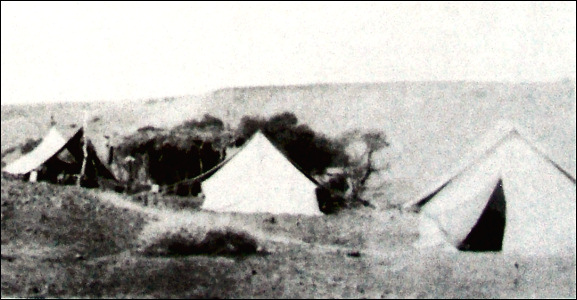Witjira National ParkAttractions Dalhousie Springs Indigenous Heritage and Culture
Mound Springs – Thermal Springs
Australia has the largest artesian system in the world, known as the Great Artesian Basin, covering more than 20 per cent of the Australian continent. There are about 600 artesian spring complexes across 12 major groups. The springs can range in size from a few metres across to a large cluster of freshwater pools known as ‘supergroups’.
The Witjira-Dalhousie Springs is a ‘supergroup’ comprising some 60 springs, the greatest concentration of mound springs in Australia, extending over 50,000 hectares. The Dalhousie Springs are part of a chain of mound springs extending along the outer rim of the Great Artesian Basin. Dalhousie Main Springs, where the springs lie in a broad depression, remain the most popular and most visited.1
The artesian water, that wells up from considerable depths below the earth surface, is millions of year old. The water at Dalhousie Springs approximately 34-38ºC, making it a pleasurable bathing and recreational oasis. The water at Purni Bore is a scalding 85ºC at the bore head.
Thermal Springs Wildlife
The warm water springs are home to unique species of aquatic life. In Dalhousie Springs fish species include the Dalhousie hardy-head (Craterocephalus dalhousiensis), the Dalhousie catfish (Neosilurus sp A), Dalhousie goby (Chlamydogobius gloveri), spangled perch (Leiopotherapon unicolor), Dalhousie mogurnda (Mogurnda sp 2).
The springs in the region are home to a range of wildlife and a haven for birdlife. Keep your eyes open for a variety of native mammals and reptiles. Dingos have also been seen in the park.1
European Exploration
• The Dalhousie mound springs were first sighted by Europeans on 10 December 1870. A small party of surveyors working on the Overland Telegraph Line, who in search of water, reported sighting from 50 to 70 foot hight limestone cliffs, a wonderful sight of pools of water and waving green reeds that were ascertained to be 18 feet hight and,
‘Far out beyond these were dazzling white lagoons which toward the south east appeared to almost ouch the horizon.’
This appeared to be ‘spring country’. They found that within the spring complex there was every kind of water imaginable. For example:
‘they contained, salt, magnesia, as well as having hot or cold and fresh water.’
Prior to the surveyors leaving Adelaide, Lady Edith Ferguson, wife of the South, Australian Governor and daughter of the Marquis of Dalhousie presented them with boxes of books. Hence the workers, believing the springs to be their most important find and ‘the greatest area of springs in Australia’, decided to name them after Lady Edith who requested that they be given her family name.
Source: Witjira National Park signage

Geoffrey H. Manning from The Romance of Place Names of South Australia.
Dalhousie Homestead Ruins
Here you can see the remains of a number of buildings of the original outback station. Date palms still grow, planted in the early days of the outback station.

Witjira National ParkAttractions Dalhousie Springs Indigenous Heritage and Culture
South AustraliaAdelaide Hills Alberrie Creek Algebuckina Bridge Belair National Park Kangaroo Island Kanku–Breakaways Conservation Park Mount Gambier Oodnadatta Oodnadatta Track Orroroo Port Augusta Port Germein Wabma Kadarbu Conservation Park William Creek Wilpena Pound Witjira National Park Woomera
